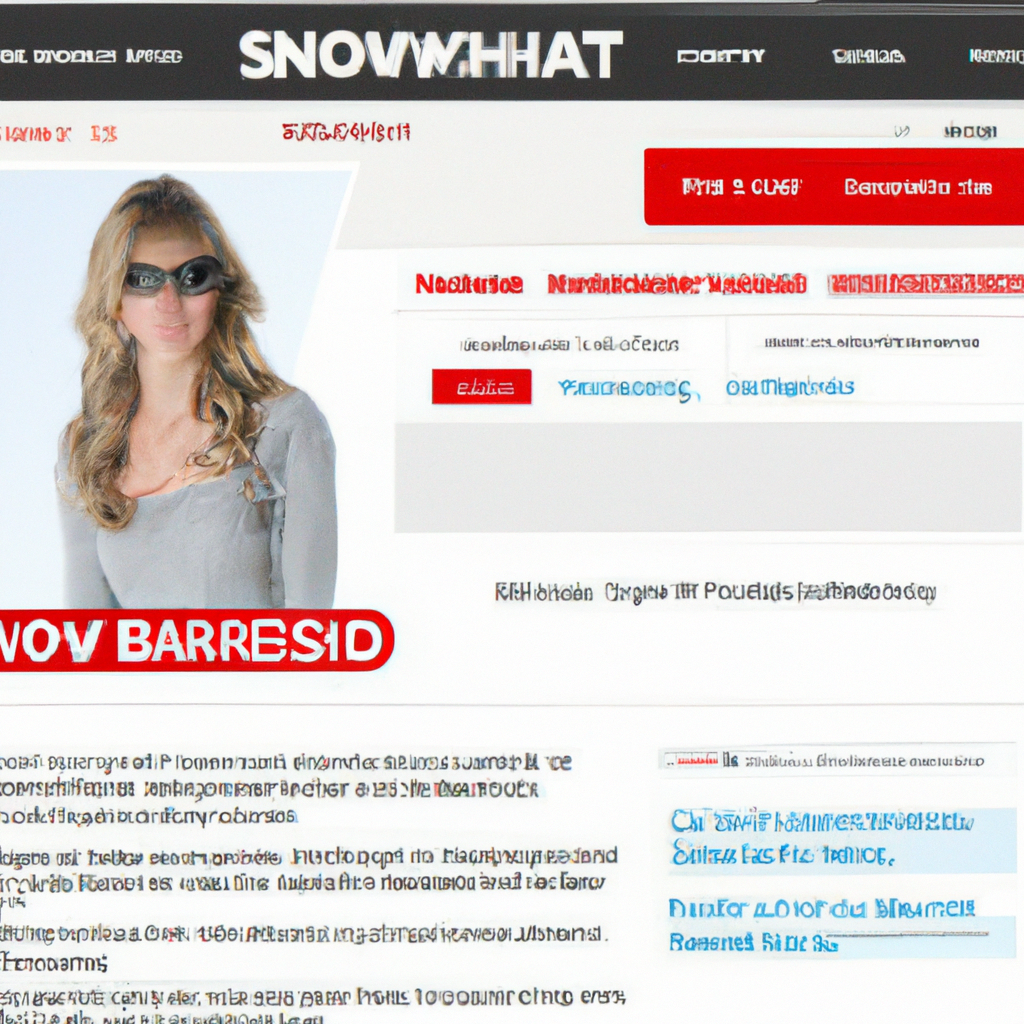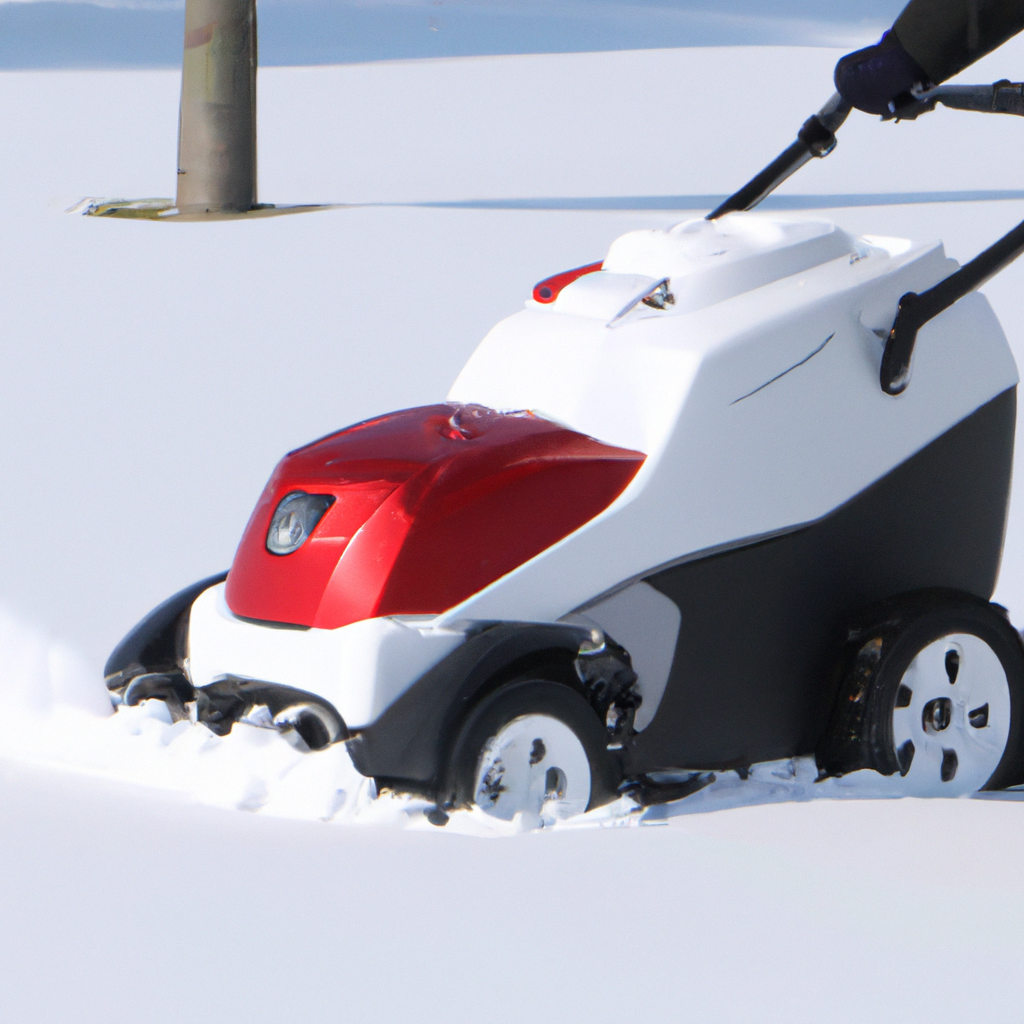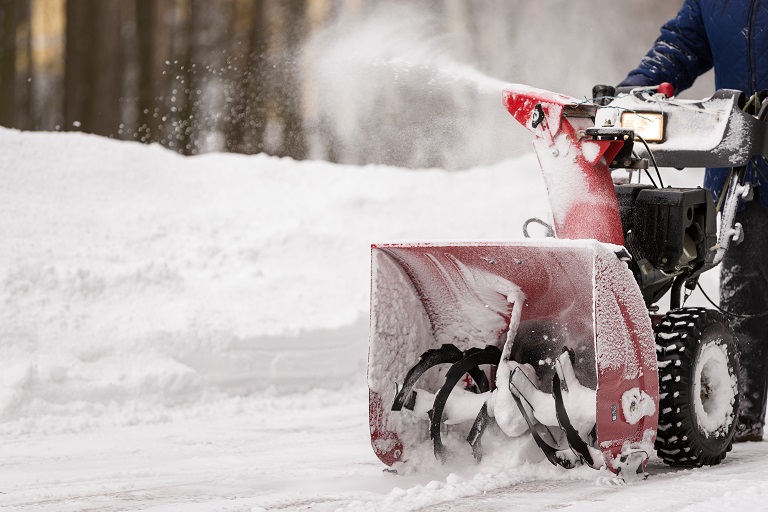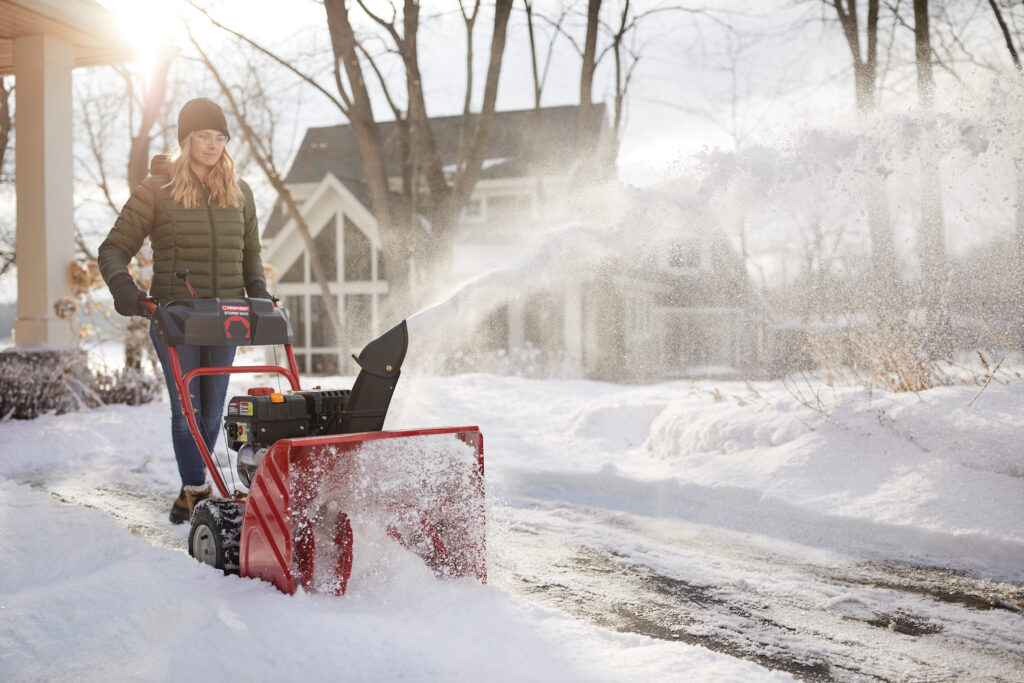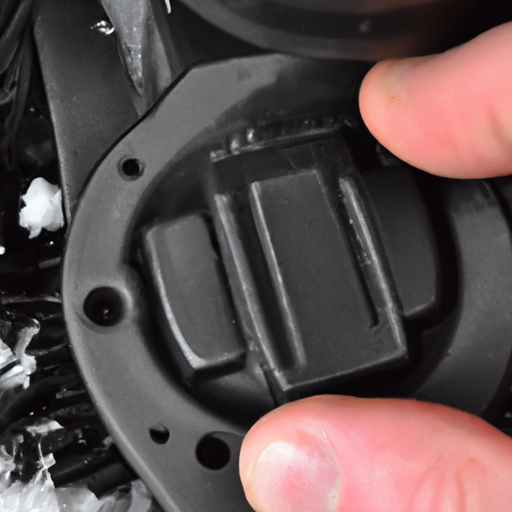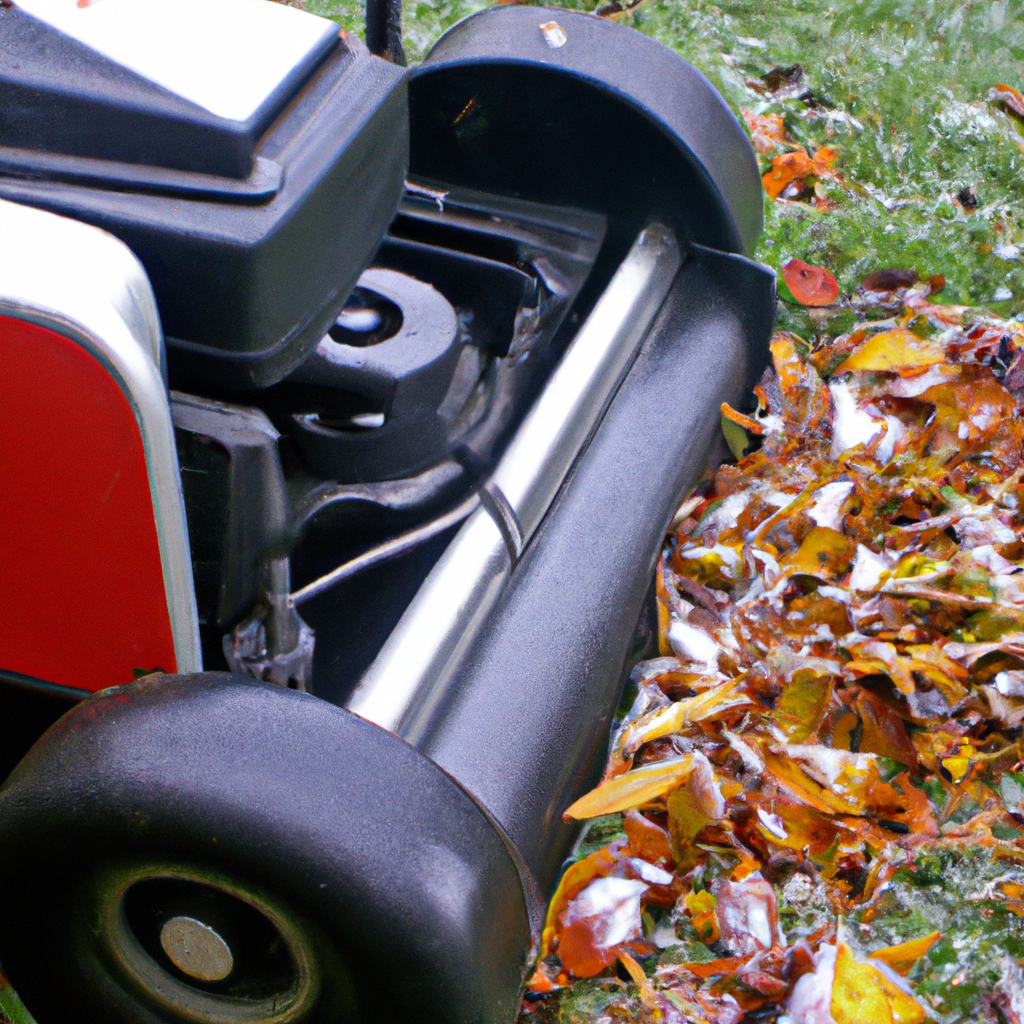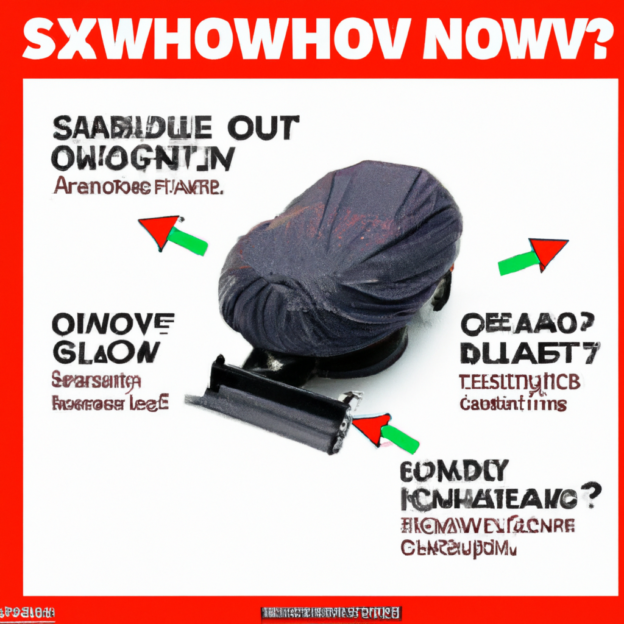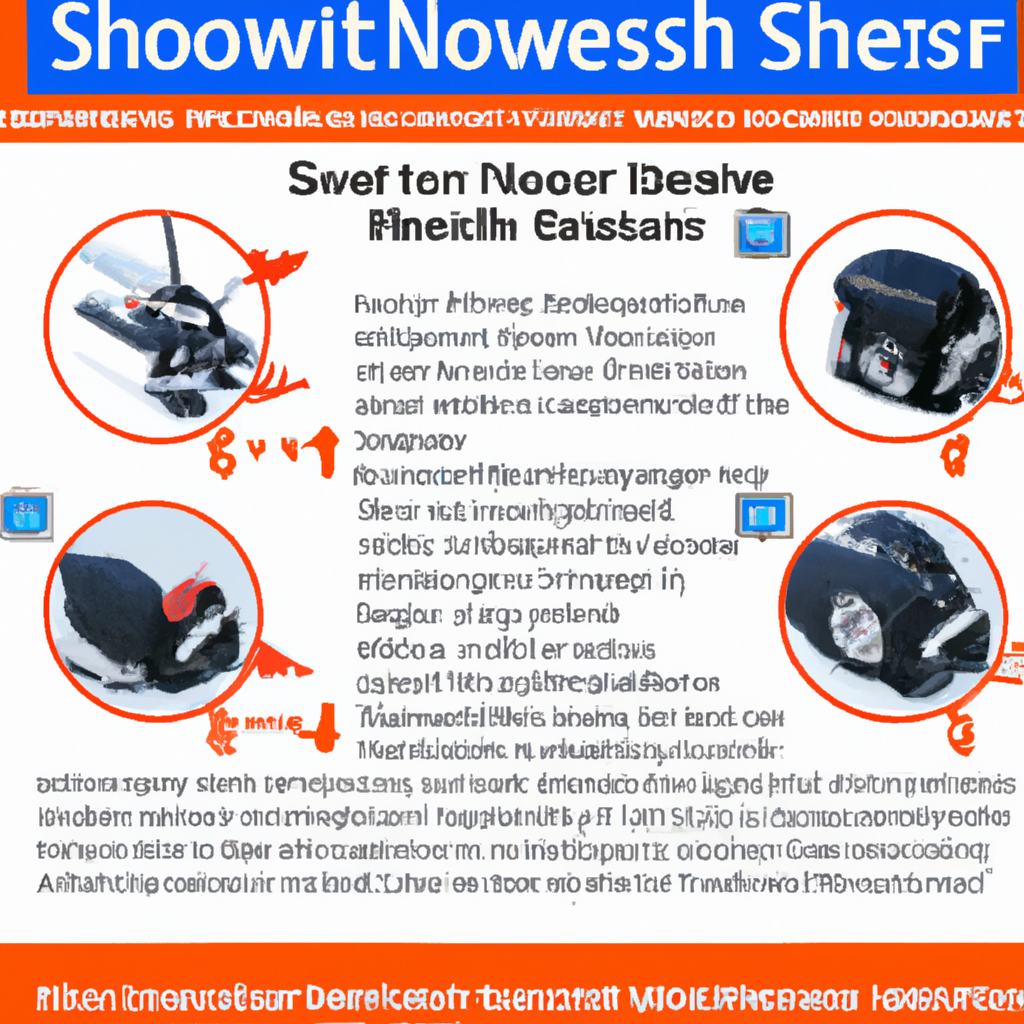So you’ve got a snowblower and a yard that’s anything but flat. But can you use a snowblower on uneven terrain? The short answer is yes, you can. However, the type of snowblower you have and the severity of the unevenness will determine just how effective it will be. In this article, we’ll explore the different factors to consider when using a snowblower on uneven terrain, as well as some tips to ensure a smooth operation and a well-cleared path.

This image is property of pixabay.com.
Types of Snowblowers
When it comes to clearing snow from your property, there are three main types of snowblowers to choose from: single-stage, two-stage, and three-stage snowblowers. Each type has its own unique features and benefits, so it’s important to understand the differences before making a decision.
Single-stage Snowblower
A single-stage snowblower is the most basic and compact option available. It consists of a rotor with rubber paddles that helps propel the machine forward while also digging into the snow. The rotor also throws the snow out of the chute, clearing a path as you go.
Two-stage Snowblower
A two-stage snowblower is a step up from the single-stage model. It features an additional component called an impeller, which helps throw the snow out of the chute more forcefully. This makes the two-stage snowblower more powerful and capable of tackling heavier and deeper snowfall.
Three-stage Snowblower
The three-stage snowblower takes it a step further, offering even more power and efficiency. In addition to the rotor and impeller, it also has an accelerator that moves faster than the rotor, effectively clearing the snow in three stages. This makes it the most robust and effective option for removing large amounts of snow.
Considerations for Uneven Terrain
If you have uneven terrain on your property, there are a few important factors to consider when choosing a snowblower. These considerations will help ensure that you can effectively and safely clear snow from your property.
Ground Clearance
One of the most important considerations for uneven terrain is ground clearance. You want to make sure that the snowblower has enough clearance to maneuver over bumps, dips, and uneven surfaces. This will prevent the machine from getting stuck and allow for smooth operation.
Wheel Size and Traction
Another crucial factor is the size of the wheels and the traction they provide. Larger wheels with deep treads will offer better stability and traction on uneven terrain. This will allow the snowblower to maintain control and effectively clear the snow, even on slippery surfaces.
Adjustable Height
Having an adjustable height feature is also beneficial for uneven terrain. This allows you to raise or lower the snowblower’s housing to match the height of the terrain, minimizing the risk of the machine getting stuck or causing damage to the surface.
Weight and Stability
Lastly, consider the weight and stability of the snowblower. A heavier machine will provide better stability on uneven terrain and reduce the chances of it tipping over. Look for a snowblower with a sturdy and well-built frame that can handle the demands of uneven surfaces.

This image is property of pixabay.com.
Single-stage Snowblower
How it Works
A single-stage snowblower works by using a rotor with rubber paddles to scrape the snow off the ground and throw it out of the chute. The rubber paddles rotate and make contact with the surface, effectively clearing the snow in a single motion.
Pros
One advantage of a single-stage snowblower is its compact size and lightweight design. This makes it easier to maneuver and store, especially in small spaces. Single-stage snowblowers are also generally more affordable compared to their two-stage and three-stage counterparts.
Cons
However, single-stage snowblowers may not be as effective on uneven terrain. The lack of powered wheels and the reliance on the paddles for propulsion can make it challenging to navigate over bumps and dips. Additionally, single-stage snowblowers may struggle with deeper or wetter snow, requiring multiple passes to fully clear the area.
Suitability for Uneven Terrains
While single-stage snowblowers can still be used on uneven terrain, they may not offer the same level of performance and convenience as other types. If your terrain is relatively flat and the snowfall is light to moderate, a single-stage snowblower can still get the job done effectively.
Two-stage Snowblower
How it Works
A two-stage snowblower works by using an auger to gather the snow and feed it into an impeller. The auger breaks up the snow and moves it towards the impeller, which then throws the snow out of the chute with greater force.
Pros
Two-stage snowblowers are more powerful than single-stage models, making them suitable for heavier and deeper snowfall. They can handle wet snow more effectively and are generally faster at clearing larger areas. The addition of powered wheels also enhances maneuverability and control on uneven terrain.
Cons
Two-stage snowblowers are typically larger and heavier than single-stage models, which can make them more difficult to store and maneuver in tight spaces. They also tend to be more expensive, requiring a higher upfront investment. Additionally, the auger in a two-stage snowblower may not be as effective on icy or packed snow, requiring additional effort or the use of other tools.
Suitability for Uneven Terrains
Thanks to their powered wheels and greater stability, two-stage snowblowers are better suited for uneven terrains compared to single-stage models. They can handle bumps and uneven surfaces more effectively, allowing for smoother operation and optimal snow clearing.

This image is property of pixabay.com.
Three-stage Snowblower
How it Works
A three-stage snowblower operates similarly to a two-stage model, but with an additional accelerator component. The accelerator moves faster than the rotor, effectively breaking down the snow into smaller pieces before it gets thrown out of the chute. This results in even faster and more efficient snow clearing.
Pros
The three-stage snowblower is the most powerful option available, making it capable of handling the heaviest snowfall with ease. Its faster clearing speed translates to less time spent clearing snow, which is especially beneficial for larger properties or areas with frequent heavy snowfall.
Cons
One drawback of a three-stage snowblower is its high price point. The added accelerator component also increases the overall complexity of the machine, potentially requiring more maintenance and repair. It is also a larger and heavier machine, which might limit its maneuverability in tight spaces or on smaller properties.
Suitability for Uneven Terrains
Similar to two-stage models, three-stage snowblowers come equipped with powered wheels that enhance maneuverability and stability on uneven terrain. They are able to handle bumps and dips more effectively, making them a suitable choice for properties with uneven surfaces.
Tips for Using a Snowblower on Uneven Terrain
When using a snowblower on uneven terrain, there are a few tips to keep in mind to ensure safe and effective operation.
Inspect the Terrain
Before starting, take a moment to inspect the terrain for any large obstacles or hazards. Remove any debris or objects that could get caught in the snowblower or cause damage.
Clear Obstacles
If there are any obstacles on the surface, such as rocks or branches, clear them away before using the snowblower. These objects can pose a risk to both the machine and the operator.
Adjust Height Settings
Make sure to adjust the height settings of the snowblower according to the unevenness of the terrain. This will help prevent the machine from getting stuck or causing damage to the surface.
Use Proper Technique
When operating the snowblower, use proper technique and maintain a steady pace. Avoid pushing or forcing the machine over large bumps or obstacles to minimize the risk of tipping or damaging the snowblower.
Work Slowly and Steadily
On uneven terrain, it’s important to work slowly and steadily. This allows the snowblower to effectively clear the snow while maintaining control and stability. Rushing or going too fast can increase the chances of accidents or damage.

Benefits of Using a Snowblower on Uneven Terrain
Using a snowblower on uneven terrain can offer several benefits beyond simply clearing snow from your property.
Efficient Snow Clearing
Snowblowers, especially two-stage and three-stage models, are designed to clear large areas of snow quickly and efficiently. This means less time spent clearing snow and more time to enjoy the winter season.
Reduced Manual Effort
By using a snowblower, you can significantly reduce the physical effort required to clear snow. The machine does the heavy lifting, allowing you to save your energy for other tasks or activities.
Time-saving
With their power and efficiency, snowblowers can save you valuable time compared to manual shoveling. This is especially beneficial if you have a large property or experience heavy snowfall regularly.
Prevents Damage to Surfaces
Snowblowers are designed to clear snow without damaging the underlying surfaces. This is particularly important on uneven terrain, where using a shovel could potentially cause damage or uneven wear and tear.
Potential Risks and Precautions
While snowblowers can be a handy tool for clearing snow on uneven terrain, there are some potential risks to be aware of.
Tipping Over
If not operated with caution, snowblowers can tip over on uneven terrain. This can pose a risk to both the operator and the machine itself. It’s important to maintain balance and stability while using the snowblower and avoid steep inclines or slopes if possible.
Damage to the Machine
Operating a snowblower on uneven terrain can put additional strain on the machine. Rocks, roots, or other hidden objects can cause damage to the auger or other components. Regular maintenance and inspection are crucial to ensure the machine remains in good working condition.
Injury Hazards
Operating any type of machinery involves a certain level of risk. It’s important to follow all safety guidelines and wear appropriate protective gear, such as goggles and gloves, to minimize the risk of injury.
Precautionary Measures
To mitigate these risks, it’s important to take some precautionary measures. Read and follow the manufacturer’s instructions and safety guidelines. Regularly inspect the machine for any signs of damage or wear. Be aware of your surroundings and operate the snowblower in a well-lit area. And always prioritize safety first.
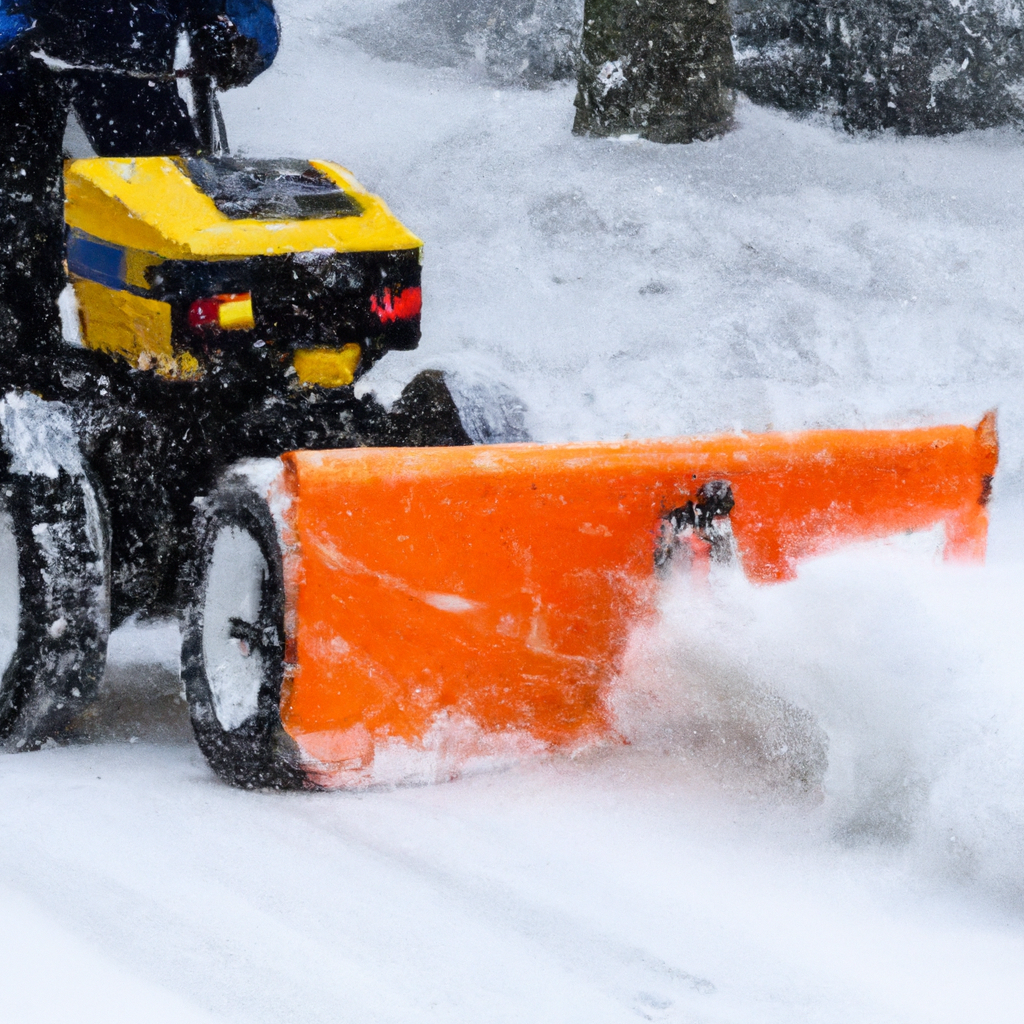
Factors that Influence Suitability
Various factors can influence the suitability of a snowblower for use on uneven terrain.
Severity of Unevenness
The severity of the unevenness in your terrain will play a role in determining the suitability of a snowblower. Light to moderate unevenness can usually be managed with any type of snowblower, but more severe unevenness may require a more robust and powerful machine.
Size and Power of Snowblower
Larger and more powerful snowblowers tend to perform better on uneven terrain compared to smaller models. The size and power of the snowblower should be chosen based on the size of your property and the amount of snowfall you typically experience.
Operator’s Experience
The operator’s experience and skill level also play a role in choosing the right snowblower for uneven terrain. If you’re unfamiliar with operating a snowblower or have limited experience, it may be best to start with a smaller and more manageable machine.
Type of Uneven Terrain
The specific type of uneven terrain on your property will impact the suitability of a snowblower. Deep ruts, large rocks, or steep slopes may require a more specialized or heavy-duty snowblower to effectively clear the area.
Conclusion
When deciding to use a snowblower on uneven terrain, there are several important considerations to keep in mind. Assess the severity of the unevenness, the size and power of the snowblower, and your own experience and skill level. Follow proper usage and safety guidelines, such as inspecting the terrain, clearing obstacles, and working slowly and steadily. Consider the benefits of using a snowblower, such as efficient snow clearing, reduced manual effort, and time-saving. However, be aware of the potential risks and take precautionary measures to mitigate them. By carefully considering these factors and utilizing snowblowers properly, you can effectively and safely clear snow from your uneven terrain.



